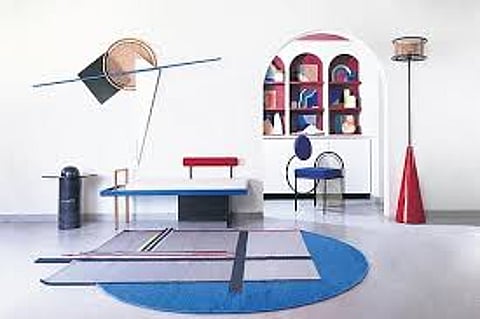
- News
- Campus
- Exam
- Podcast
- Web Stories
- Do You Know
- Path Finders - UG Programs
- Videos
- Élitscape

Artificial Intelligence (AI) has become one of the most significant drivers of change across industries.
In design, its influence is profound, reshaping how ideas are created, tested, and delivered.
AI is no longer just a support tool; it is becoming a core collaborator that expands creative capacity while aligning with business priorities such as efficiency, sustainability, and personalization.
For education, this transformation demands a rethink. To remain relevant in a tech-first world, creative learning environments must prepare students who can move seamlessly between human-centered design thinking and AI-powered processes.
Redefining Design Learning Through AI
Traditionally, design education trained students to refine concepts toward a single “ideal” solution.
In reality, every design involves trade-offs between usability and aesthetics, cost and quality, speed and sustainability. AI changes this paradigm by offering a spectrum of options rather than one answer.
Generative systems can create thousands of design variations in seconds, enabling learners to explore multiple pathways and select those that balance creativity with real-world constraints.
This approach mirrors how industries now operate, where agility and adaptability are more valuable than the pursuit of perfection.
AI also delivers measurable efficiencies. Across fashion, architecture, and product design, quick 3D development and simulation reduce the need for repeated physical sampling.
A garment can be digitally fitted before cutting fabric, and a structure can be tested for durability virtually before material is purchased. These practices reduce cost and material wastage while accelerating time-to-market.
Embedding such workflows in creative education ensures graduates are equipped with methods directly transferable to industry settings.
Personalization is another shift AI enables. Where industrialization emphasized standardization, AI allows for custom and adaptive design at scale.
A fashion student can create garments tailored to varied body types, and a product design student can prototype user-centric devices informed by behavioural data.
For industries, this translates to greater market differentiation and stronger consumer engagement.
By exposing students to these tools early, design education is preparing talent that understands how to transition from one-size-fits-all solutions to customer-specific ones in a digital economy.
Building New Literacies for a Tech-First Future
The integration of AI also introduces a new skill set: prompt literacy.
Outcomes depend heavily on how instructions are framed. A vague prompt leads to generic results, while a well-structured one generates outputs aligned with design intent.
Teaching students to combine traditional principles such as proportion, colour, and texture with technical articulation prepares them to “converse” with AI systems effectively.
This ability is quickly becoming a new design language, relevant not only in classrooms but also in workplaces that are adopting AI across creative and operational processes.
Equally important is interdisciplinary fluency. Tomorrow’s professionals will not only sketch or model, they will also understand the basics of coding, data visualization, and the ethical implications of AI use. Leading institutions worldwide, from MIT Media Lab to global design schools, have already embedded such modules.
At JD School of Design, similar efforts are underway to align creative foundations with technological skills, ensuring students graduate as hybrid thinkers, comfortable with both human-centered creativity and machine intelligence.
AI further empowers experimental prototyping and product enhancement. A furniture student can test structural variations through generative simulations before building a physical model.
A fashion student can digitally explore material behaviours, such as colour-shifting fabrics, before committing resources to production. By lowering the barrier to experimentation, AI opens new territories for education and industry alike, where innovation cycles are faster, risks are lower, and the scope for breakthrough ideas is greater.
What emerges is not the replacement of human creativity but its extension. Designers bring empathy, cultural understanding, and aesthetic judgment—qualities no algorithm can replicate—while AI contributes speed, scalability, and analytical depth.
Together, they form a powerful partnership. As industries become increasingly technology-driven, creative education must continue to adapt to produce professionals who can navigate this intersection.
The designers of tomorrow will not only create products and experiences but also shape intelligent systems and adaptive environments, driving innovation in a truly tech-first world.
By Swadish S A, Faculty, JD School of Design
